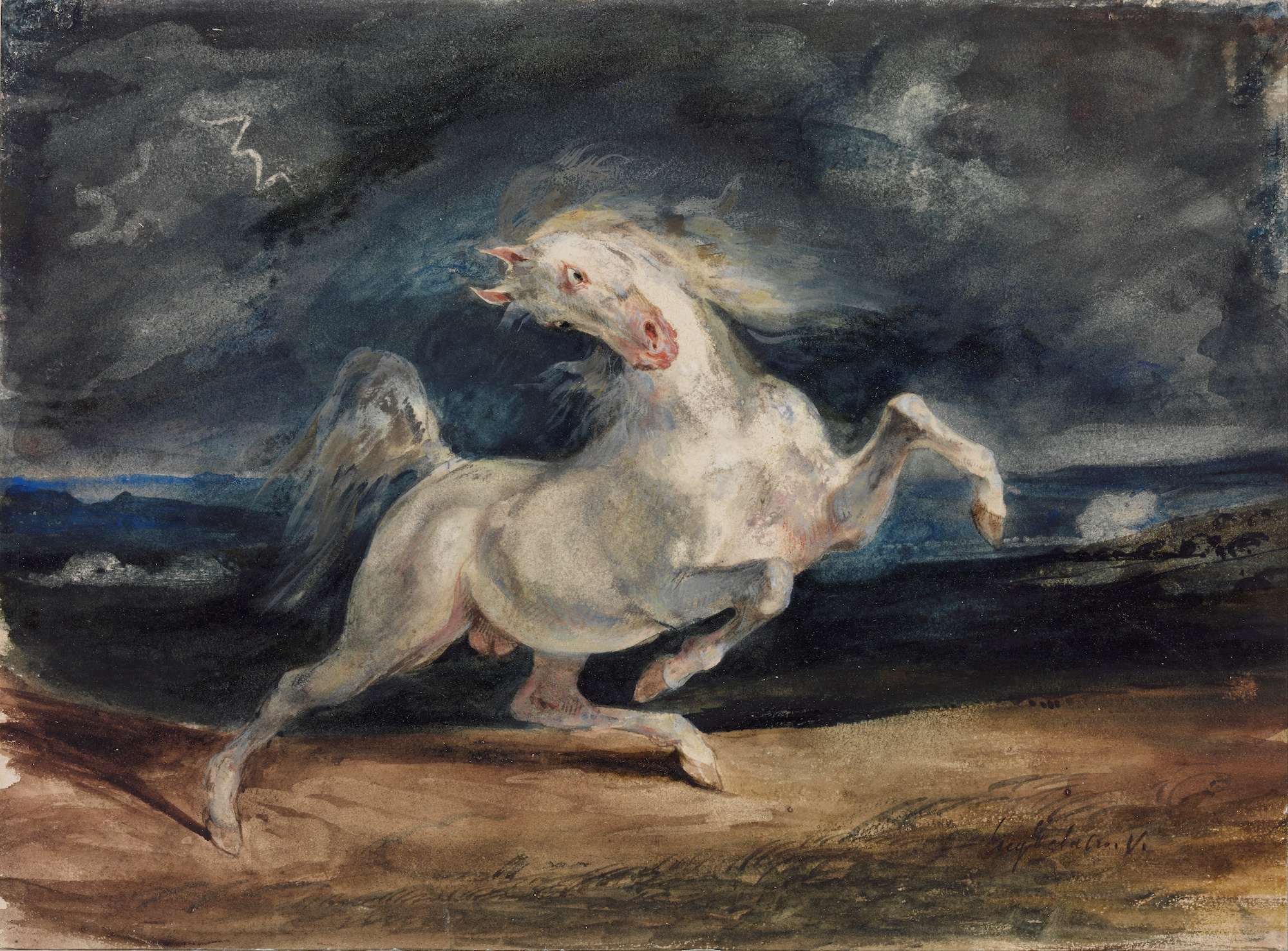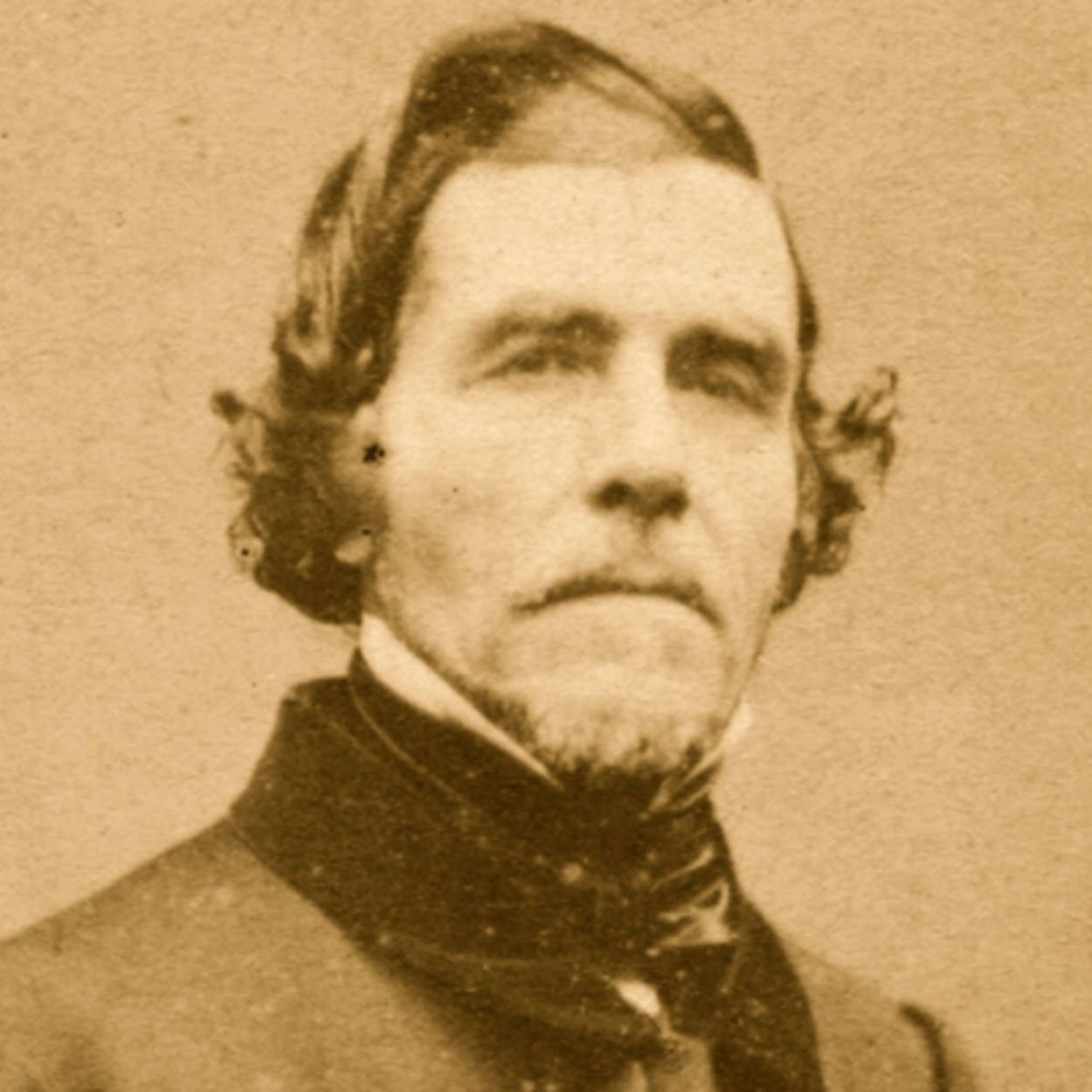The horse played a special role in the art of Delacroix in the 1820s. This was so because while preparing the monumental oil painting, Massacre at Chios (1824), he realised he needed a thorough knowledge of the anatomy of the horse if he was to paint historical scenes. Théodore Géricault's romantically impassioned horse representations were of decisive influence for him, but he did not fail to incorporate in his art the experiences of his 1825 trip to London either. He devoted much time to studying the rearing horses of the Parthenon Marbles in the British Museum, of which he later made lithographs, and he must have been influenced by the work of popular painters of animals. The most immediate precedent of the white rearing horse with the flying mane in the aquarelle held in Budapest is to be found in Sawrey Gilpin's Horses in a Thunderstorm (1797-1798). Delacroix had to know this work, made for the Royal Academy, because he replicated almost exactly the horse which recoils from the lightning in the middle of the British painting. He transformed this unimportant detail into the main motif, and by meticulously working out the reaction of the animal, he created an emotional charge that makes the piece essentially different from the model. In this watercolour, Delacroix achieves the perfect synthesis of the emotive power of a landscape and that of an animal representation. The plane stretching into the distance and the stormy sky that seems to be its extension provides a background for the frightened, rearing horse, as if for a sculpture. The lighting that crosses the almost unrealistically deep blue sky throws a sharp light on the alarmed animal. The red of its eye and distended nostrils intensifies the panic into a vision. The intensity of its motion and the gust of the storm ruffle its mane, while its tail is raised in the opposite direction. Delacroix's watercolour embodies all that the horse stood for in the eyes of the Romantics: power, nobility, untamed passion and intensified emotions. Though Alfred Robaut, the first monographer of the artist, dated the piece to 1824, thematic and stylistic links to other dramatic representations make modern scholars believe it was painted later, sometime between 1825 and 1829.




Horse Frightened by Lightning
watercolour, lead white on paper • 23.6 x 32 cm
 Eugène Delacroix
Eugène Delacroix